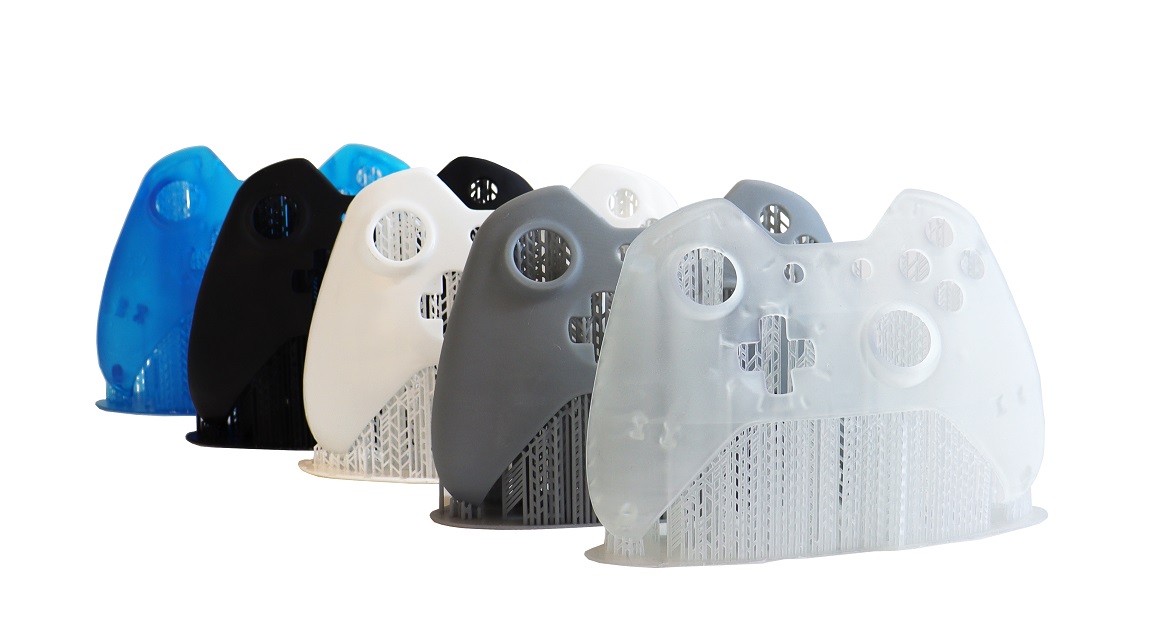All Liqcreate resins are UV-curable 3D-Printing resins, which means that they have a designed reactivity to specific light. This reactivity controls how the resins behaves in the printer and during UV post-curing. In this article we explained that specific parameters about its reactivity are the Critical Enegergy (Ec) and the Depth of Penetration (Dp), two values which can be found for all Liqcreate materials in their corresponding Technical Data Sheet. The resins are tested after production to have the same curing behaviour every batch. If there are too big difference within one printer, or between different printers, this can cause issues. Especially with the knowledge that LED’s will reduce power when they age. And aging is accelerated at higher temperatures. In this article we test the light out put of a few different printers from the same model to see how stable the output of the printers are. We thank our partners for the access to these printers and support!

Image by Liqcreate: The UV power intensity of each resin is different and dependant on wavelength of the UV light source.
What is the UV power, stability and output of different resin printers?
We measured a bunch of 405nm LCD resin printers in our lab and used 9 measurements per printer to check its stability. These were measured across the build plate in a structural manner. 3 spots on the left side from top to bottom of the LCD screen, 3 in the middle and 3 on the right with the same structure. See the table below for the UV power intensity measurements. It should be noted that most resin printers are used quite some time and might have lost some of its UV intensity / power over-time. See the complete UV power intensity measurement data-set in the appendix below.
Measuring the UV intensity output of the same printer with different usage time and age
Within our and partners facilities we found 4 models of the Anycubic Photon Mono with different ages and run-times. In the table below you can find the UV intensity measurements and percential deviations within the measurement of one printer.
| Printer | UV power of printer | Average power (mW/cm^2) | Deviation (%) |
| Photon Mono [1] | 100% | 4,63 | 6,3% |
| Photon Mono [2] | 100% | 4,71 | 3,7% |
| Photon Mono [3] | 100% | 4,72 | 8,8% |
| Photon Mono [4] | 100% | 4,65 | 6,1% |
Surprisingly the average UV intensity output, measured with the 405nm Chitu Systems UV-meter was quite similar. Which is a very good sign. However, some printers were more stable compared to others. Lets look at the raw UV intensity data:
| Printer | Anycubic Photon Mono (1) | Average | 4,631 | 9 spots: | |||||
| UV power | 100% | Min | 4,307 | 7,0% | 4,766 | 4,42 | 5,126 | ||
| date | 16-2-2023 | Max | 5,126 | 10,7% | 4,371 | 4,587 | 5,064 | ||
| STDEV | 0,29334 | 4,307 | 4,32 | 4,72 | |||||
| % dev | 6,3% | ||||||||
| Printer | Anycubic Photon Mono (2) | Average | 4,709 | 9 spots: | |||||
| UV power | 100% | Min | 4,44 | 5,7% | 4,744 | 4,68 | 4,974 | ||
| date | 20-2-2023 | Max | 4,981 | 5,8% | 4,61 | 4,981 | 4,751 | ||
| STDEV | 0,17313 | 4,44 | 4,69 | 4,511 | |||||
| % dev | 3,7% | ||||||||
| Printer | Anycubic Photon Mono (3) | Average | 4,721 | 9 spots: | |||||
| UV power | 100% | Min | 4,146 | 12,2% | 5,312 | 4,812 | 4,802 | ||
| date | 20-2-2023 | Max | 5,412 | 14,6% | 4,6 | 4,146 | 5,412 | ||
| STDEV | 0,41378 | 4,497 | 4,17 | 4,738 | |||||
| % dev | 8,8% | ||||||||
| Printer | Anycubic Photon Mono (4) | Average | 4,654 | 9 spots: | |||||
| UV power | 100% | Min | 4,11 | 11,7% | 4,507 | 5 | 4,557 | ||
| date | 20-2-2023 | Max | 5,014 | 7,7% | 5,014 | 4,891 | 4,758 | ||
| STDEV | 0,28476 | 4,11 | 4,362 | 4,69 | |||||
| % dev | 6,1% | ||||||||
If you take into account the high and low spots, the differences can be seen like this:
| Photon Mono overview: | Average | % dev from av. | STDEV % | Max | Min | |||||
| Anycubic Photon Mono (1) | 4,631 | 99,0% | 6,3% | 10,7% | 7,0% | |||||
| Anycubic Photon Mono (2) | 4,709 | 100,6% | 3,7% | 5,8% | 5,7% | |||||
| Anycubic Photon Mono (4) | 4,654 | 99,5% | 6,1% | 7,7% | 11,7% | |||||
| Anycubic Photon Mono (3) | 4,721 | 100,9% | 8,8% | 14,6% | 12,2% | |||||
| Average: | 4,679 | |||||||||
Meaning that in average the printers have similar UV intensity output, which is great. but within one printer there can be roughly 10% deviation in UV-power / UV-intensity, depending on the spot on the platform. so make sure that if you print a part in the middle, the sides might need just a bit extra exposure time to succeed.
Support
Do you need any help with 3D printing our SLA, DLP or LCD resins? We can help you! Just look for the question you have below. If you can’t find it, let us know by contacting us!


